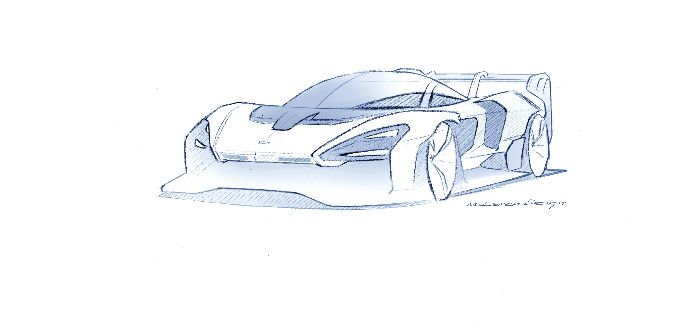Following its reveal in concept form at this year’s Geneva Motor Show, the McLaren Senna GTR – a more extreme track-only variant of the road-legal model – has been confirmed for an already sold-out limited production run, with dynamic testing commencing in November.
According to the British marque, GTR development prototypes will initially use modified Senna road car bodywork for testing purposes, though its final shape will be redesigned around a chassis with wider track front and rear and center-lock wheels.
Capable of generating an almighty 1,000kg (2,205 lb) of downforce – thanks in part to the fact the GTR retains the active aerodynamics of the road-legal car (something not permissible in a homologated race car) – the vehicle features a race-bred double-wishbone suspension with its geometry, springs, dampers and anti-roll bars developed from the system engineered for McLaren’s GT3 program.
Highlights of the production vehicle’s carbon-fiber body include new, wider fenders, a larger front splitter and rear diffuser and repositioned active rear wing, underpinned by McLaren’s lightweight Monocage body structure. The GTR also benefits from the removal of the airbags, infotainment screen and folding driver display found in the Senna road car. And while a new, race-style steering wheel with integrated gearshift control has been installed to aid track driving, drivers will be relieved to hear that Senna’s air-conditioning system has been retained, as has its radar-assisted, rear collision avoidance system.
Though McLaren has yet to officially declare the final weight
of the vehicle – of which only 75 will be built and delivered to customers from September 2019 at a cost of £1.1m (US$1.4m) each – the GTR is expected to weigh less than the road-going Senna. It’ll also be 25ps more powerful, too, thanks to its 4-liter twin-turbo V8 engine belting out a whopping 825ps and as much
as 800Nm of torque. What’s more, the vehicle’s Pirelli slick race tires – introduced in the Senna road car – are projected to deliver 20% greater maximum deceleration over Senna, with resulting stomach-churning forces in excess of 3g.
More in the November issue of ATTI.


